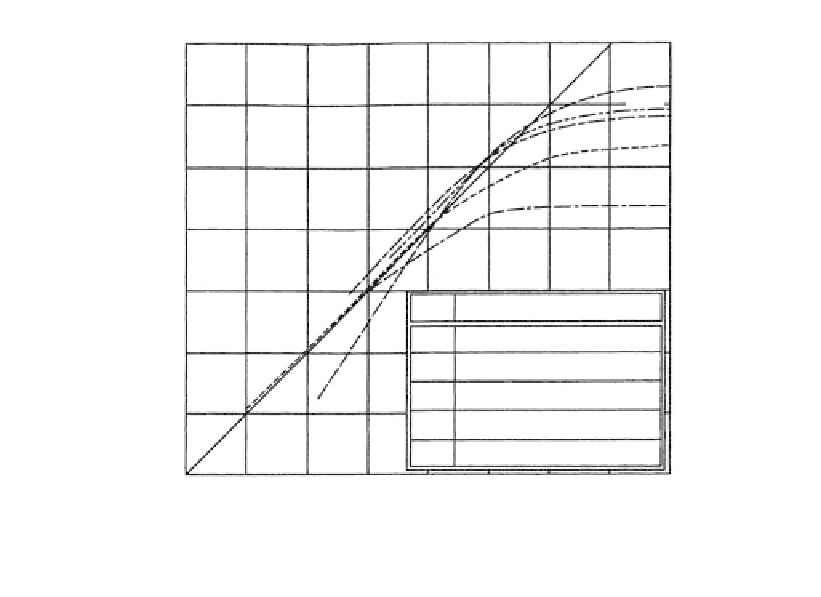Environmental Engineering Reference
In-Depth Information
9
M
s
M
JMA
8
m
B
M
L
7
m
b
6
5
Scale
Magnitude
Local or Richter
M
L
4
M
s
Surface wave
Short-period body wave
m
b
3
m
B
Long-period body wave
Japanese Meteorological Agency
M
JMA
2
2
3
4
5 6
Moment Magnitude, MW
7
8
9
10
Figure 12.3.
Relationship between Moment, M
W
and other magnitude scales (Youd and Idriss, 1997;
after Heaton et al., 1982).
most commonly used scale is the modified Mercalli Scale which is reproduced in
For the design of dams, the horizontal and vertical acceleration induced by the earth-
quake at the base of the dam is usually required. Information is best obtained from
accelerograph measurements at the dam site, but in many cases will be obtained from
records of sites with similar geological conditions. A typical accelerograph record is
shown in
Figure 12.4
.
12.2.3
Attenuation and amplification of ground motion
Earthquake ground motion attenuates with increasing distance from the source due to
radiation and hysteretic damping. High frequency motion is attenuated more quickly with
distance than lower frequency motion.
For estimates of peak ground acceleration, attenuation is allowed for by using an atten-
uation function of the form:
bM
b
abeR
1
(12.5)
2
3
where a
acceleration; R
focal distance; M
Magnitude; b
1
, b
2
, b
3
are constants,
which vary considerably over the world.
Some earthquake hazard studies use the Esteva and Rosenblueth (1969) attenuation
functions, which give peak ground velocity (mm/s), peak ground acceleration (mm/s
2
) at
an epicentral distance x kilometres from an earthquake at focal depth z kilometres with
local magnitude M
L
. The equations are:
2
2
(12.6)
Rx
z
400



